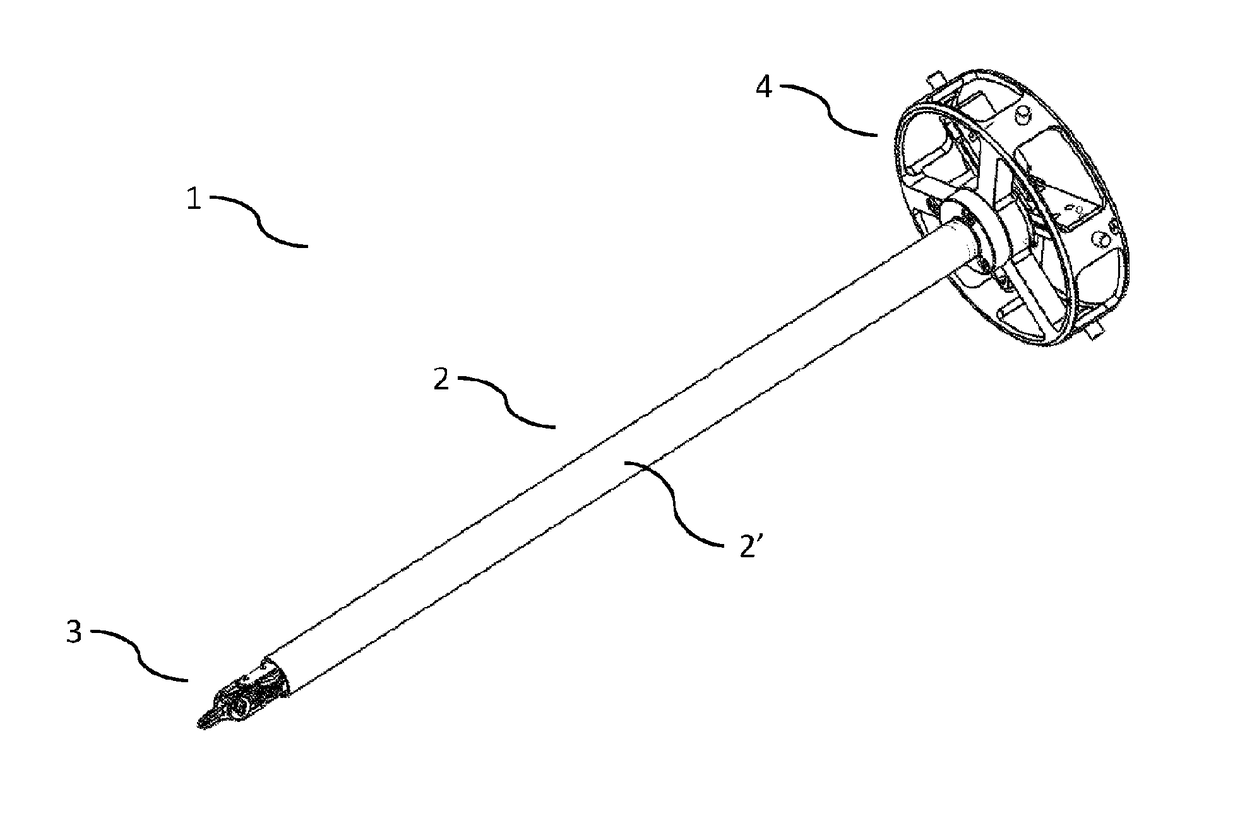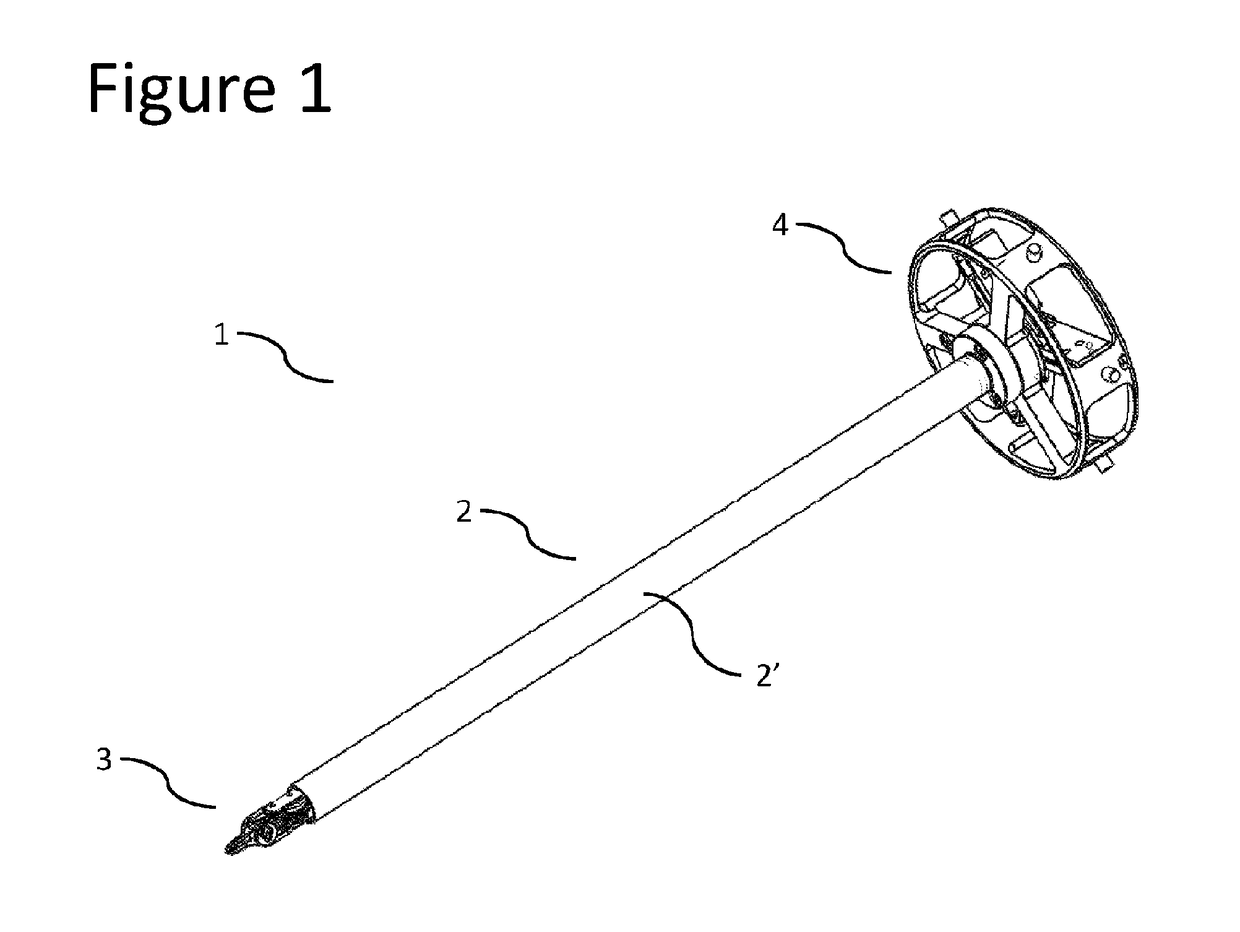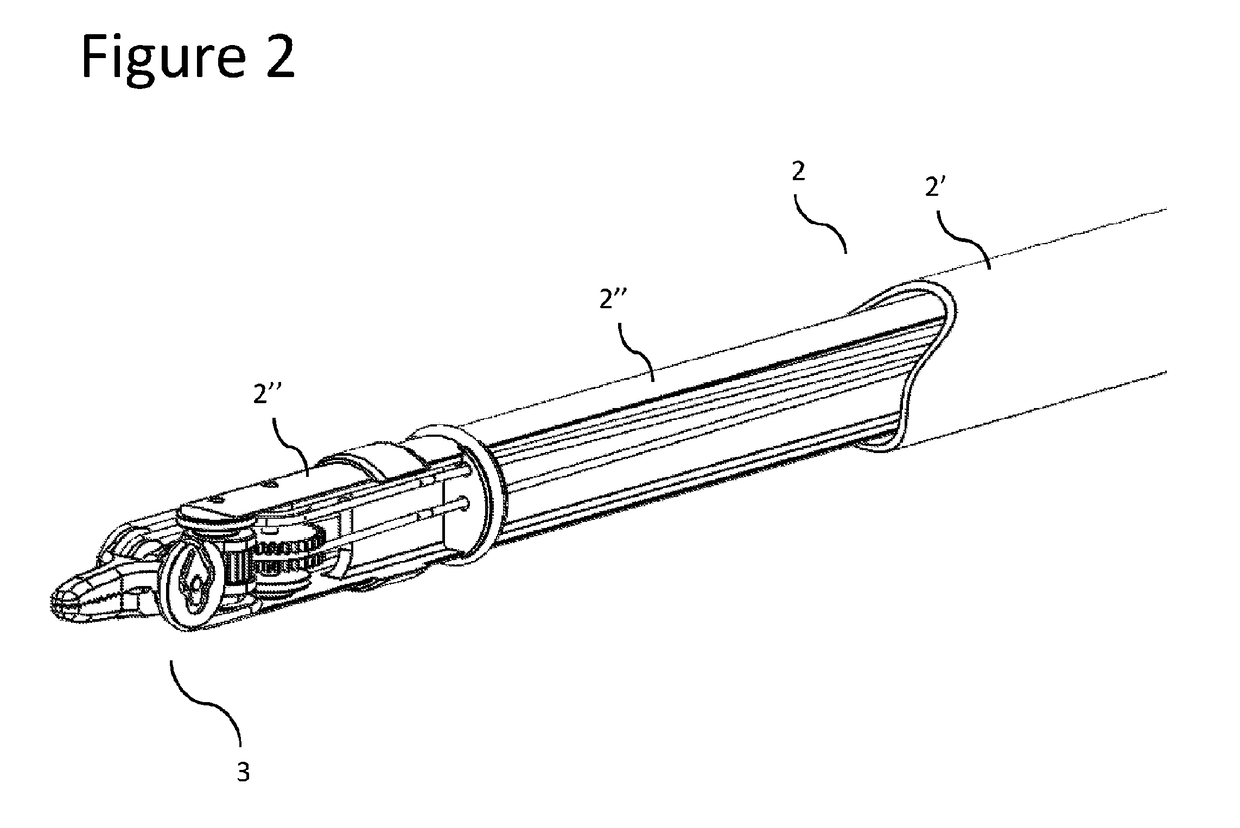Reusable surgical instrument for minimally invasive procedures
- Summary
- Abstract
- Description
- Claims
- Application Information
AI Technical Summary
Benefits of technology
Problems solved by technology
Method used
Image
Examples
Embodiment Construction
[0028]A reusable surgical instrument 1 for minimally invasive surgical procedures, with a detachable external tube 2′, constructed in accordance with an embodiment of the present invention, is described herein, and is seen generally in FIG. 1. This instrument 1 includes a main shaft 2, a distal articulated end-effector 3 and a proximal hub 4. Referring to FIG. 2, the shaft 2 is composed of two different elements: an internal structural element 2″ and an external tube 2′. The internal structural element 2″ provides a stable positioning to the end-effector 3 and to allow the passage of the different mechanical elements 5, 6, 7 that are able to deliver motion to the different end-effector links 8, 9, 10 from the proximal hub 4 at the proximal extremity of the instrument (FIGS. 3 and 4). The external tube 2′ protects the internal elements on the shaft 2 when passing through the incision and avoids the passage of air through the instrument 1, in order to maintain the inflation of the bod...
PUM
 Login to View More
Login to View More Abstract
Description
Claims
Application Information
 Login to View More
Login to View More - R&D
- Intellectual Property
- Life Sciences
- Materials
- Tech Scout
- Unparalleled Data Quality
- Higher Quality Content
- 60% Fewer Hallucinations
Browse by: Latest US Patents, China's latest patents, Technical Efficacy Thesaurus, Application Domain, Technology Topic, Popular Technical Reports.
© 2025 PatSnap. All rights reserved.Legal|Privacy policy|Modern Slavery Act Transparency Statement|Sitemap|About US| Contact US: help@patsnap.com



